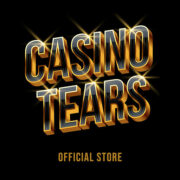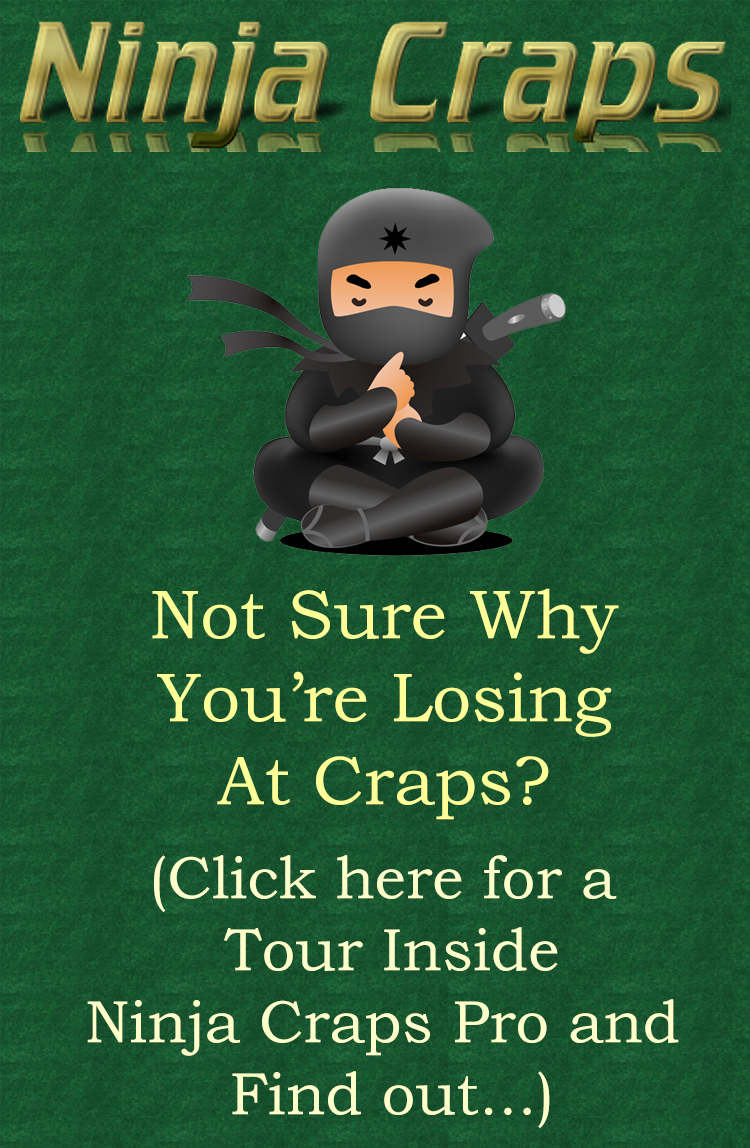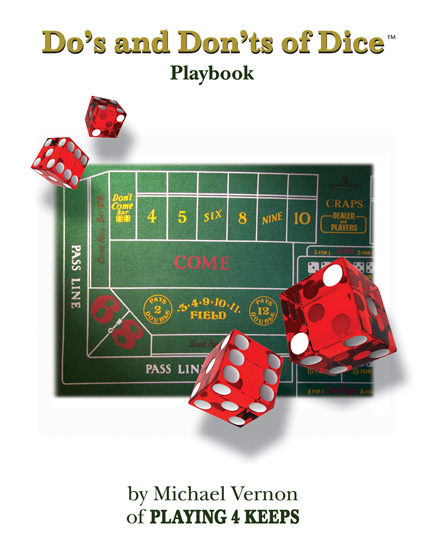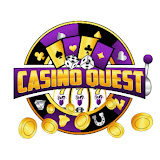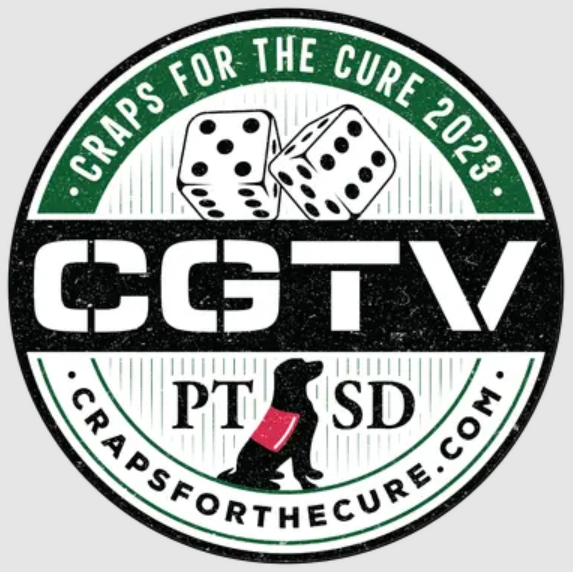|
Introductory Craps - Part 2
BY: Mike in Hawaii
Now that you have some understanding of who's who at a Craps table and following the flow of the game, we can move on to betting. There is a vast array of bets on the Craps table. Fortunately you can ignore most of them. Some are quite bad. Others take a bit of study to understand. So we will construct a very simple, but legitimate, betting strategy for having lots of fun at a Craps table. We will also introduce many of the key concepts in Craps betting strategies.
Passing Money in a Casino Correctly
You never hand money to a Casino employee directly. It has to do with the cameras and security, people always watching etc. For instance, when you buy into a Craps game, you do not hand the $100 or whatever to the dealer. You place it on the felt and say something like "Change please". The dealer will then pick it up off the felt where you left it. He will place the chips you just bought back on the felt in about the same place. Then you will pick up your new chips.Same thing with making bets that require dealer interaction. You put the chips down when it is your turn to bet, and you have your dealer's attention, telling him what kind of bet you want to make. The dealer then picks them up and puts them in the right place for you. If you win, the dealer puts the chips on the felt in front of you. You then are free to pick them up. Never hand-to-hand. This is not unique to Craps. It is how it is done throughout the Casino.
Beginners should probably be playing at a table with a $5 minimum Passline Bet requirement or less. A Franklin, or a $100 bill, is plenty of money to buy into a Craps game to get chips for a conservative betting strategy. Chips have nicknames. $5 chips are called Reds because they usually are red, and also Nickels. The $25 chips are typically Green and the $100 chips are typically Black, sometimes called Blackbirds. The $1 chips have quite a bit of color variation but tend to be mostly white or blue. So when you lay your $100 cash on the felt and ask for "Change", the dealer will probably replace it with a stack of 20 red chips for you to pick up.
When the puck is showing "OFF" is the correct time to buy into a Craps game by placing your cash on the felt and asking for "Change". When you ask for "Change" the dealer will immediately know you are not placing a bet but just getting chips. If you have a player's club card for that Casino, you can put it on top of your Cash so you will be logged into that table and your play will be rated for comps. You can get comps and points for playing table games just like playing slot machines, usually with the same player's club card. Your player's club card will temporarily disappear behind the table into the realm of the Pit Boss, but do not worry, it will be returned to you in a few minutes.
The top edge of the tub, the depressed area of the Craps table, is called the rail. It is very much like the rail on a banister. The rail is typically broad and has two rounded bottom troughs cut into it where you can lay your chips on their sides. You want to keep an eye on your chips and keep them together right in front of you in the rail, or in your hand.
Keep your Hands to Yourself
Keep your hands out of the tub except when placing a bet, picking up chips or getting change. Do not lean on the rail and let your hands hang over into the playing area where they might be hit by thrown dice. One thing that always upsets Craps players is having the dice hit another player's hands (it is considered very unlucky), so keep your hands out of the tub. It will save you a potential embarrassment.
So how and what to bet? There are two types of Craps betters called "Right" betters and "Wrong" betters. There is nothing really wrong with the "Wrong" better and he is doing nothing actually wrong, it is just one of those strange Craps terms for the types of bets he likes to make.
Most betters are "Right" betters, and you should start out betting right. I have never tried to count the number of possible bets at a Craps table, but there are lots of them. When you get down to the "good" bets, those with low house advantage, you end up with a very short list. These good "Right" bets are called Passline, Odds on Passline, Place 6, Place 8 and Come. After those few bets, the house advantage starts to go up painfully fast, until we get to some bets that qualify as the worst sucker bets the Casino has to offer.
Passline Betting
One of the best bets on the Craps table is called the "Passline". It is an actual strip on the felt that runs all the way around each end of the table. To make a Passline Bet, you just put a chip in this strip which is marked "Passline". Put your bet into the strip directly in front of where you are standing. Passline Bets are one of those Craps bets you can make yourself, without help from a dealer.
The Passline Bet is only made before a Comeout Roll. Remember the two "phases" of Craps? When a shooter is about to "come out", and the puck is showing its "OFF" side, is the time to drop your Nickel ($5 Chip) on the Passline. This particular bet is what is called a "Contract bet". Once it is made, it is stuck there. For better or for worse, until the shooter either wins this hand or loses this hand. The Passline Bet has a great low house advantage and is one of the best bets in the house. It is also the mandatory bet that is required of each shooter before he or she can throw the dice. But it is optionally available to everyone else at the Craps table before a Comeout Roll.
If the shooter wins, you win. How do you know if you won or not? Simple, the dealer gives you money! Or more correctly (remember no hand-to-hand?) the dealer will place a second $5 chip next to your original chip which you can then pick up and place in your rail. How do you know if you lose? Equally simple. The dealer reaches over and takes your $5 chip off the Passline and puts it onto his stack.
Remember the rules for the Comeout Roll? If the shooter rolls a 7 or 11 that is a Natural Win and your Passline Bet wins immediately. If the shooter rolls Craps, a 2, 3 or 12, then you lose and your Passline Bet loses immediately.
If the shooter sets a point, if he rolls anything else (4, 5, 6, 8, 9, 10), then your Passline Bet just sits there waiting. Like everyone else it is waiting to see if the shooter will throw that same "point number" again before he Sevens Out (rolls a 7). If he makes his point, your Passline Bet wins and you will be getting another Red from the dealer. If the shooter Sevens Out, the dealer quietly scoops up your chip and puts it on his stack. Very simple. The dealer does all the heavy lifting.
Once you properly make the Passline Bet by putting the chip in the right place directly in front of you, it becomes as self working as a slot machine. Either your chip will eventually go away, or the dealer will give you a second one to go with it. When the stickman says something like "Take the Line" he is saying the Passline Bets have lost and the dealers should collect them for the house. When he says something like "Take the Don't, Pay the Line" he is saying the Passline Bets have won and the dealers should pay them.
You will quickly start to wonder how in the world the dealers keep track of all those chips on the felt! Which chips belong to which players? Well dealers have a special geometry. They arrange the chips inside each betting area into little maps of the table.Placing your Passline bet into the Passline strip directly in front of where you are standing, is one example of this geometry.The dealer will know that is YOUR bet based on where exactly it is on the felt. Right in front of you. Other bets that are made by dealers or the stickman in other places on the felt are done similarly. The exact placement of each chip is far from random. If you watch carefully, you will soon start to see these patterns and be able to know, like the dealers know, which chips belong to which players.
The payoff on a Passline Bet is known as "one to one" or 1:1 because if you win, you get back exactly as much as you wagered. You also get to keep your original chip as well. So if your Passline Bet wins, you get to keep your original $5 chip and you get a new $5 chip to go with it. If you lose the dealer will be around to collect your $5 original chip off the Passline and he won't be leaving anything.
Not Losing Your Money Faster
[AKA How to Politely Ignore Free Advice at a Craps Table]
You won't be making your Passline Bets very long before a helpful person tells you all about "Taking Odds". A friendly dealer will often ask you "don't you want to take odds with that?" Kind of like at the local fast food joint mantra "Wouldn't you like fries with that?" or "Do you want to Super Size that?" Helpful advice at the Craps table is probably inevitable.
Bottom line, especially in terms of money, is you should probably listen to advice at the Craps table politely, thank the nice person, and then quietly keep right on doing what you fully understand. How you are going to be betting, your betting pattern, is one of those things which should be learned and completely sorted out in advance. Betting strategy should not made up as you go along, pulled this way and that by helpful advice, while at the Craps table.
Odds on the Passline Bet are a generally good idea, but you will be making LARGER bets! That means your money can disappear a LOT faster! However, odds, sometimes called "free odds" on the Passline Bet is something you should know about.
After the Comeout Roll, when the shooter is getting ready to start Chasing His Point, you can increase your existing Passline Bet in a special way. You can put out some extra chips right behind your Passline Bet. It is thus sometimes called "taking odds behind". This bet is not paid off simply at one to one, but at the true odds. It has zero house advantage. That is kind of a big whoop. A totally fair bet in a Casino! Almost unheard of.
So here is how you can start to experiment with taking odds on the Passline. IF and only IF the shooter sets a point of either Six or Eight. Only if after his Comeout Roll he ends up with a point of Six or Eight (the Puck will flip over to read "ON" and be placed either behind the Six box or the Eight box) you can put a second $5 Red chip next to your original Red chip. Do not put it on top of the original chip, or beside it in the Passline strip, but just outside the Passline strip, a bit closer to where you are standing. In other words, "Behind the Line".
If the point is 4, 5, 9 or 10, just stick with just the simple Passline Bet you have already made. No additional odds. The Six and Eight will be the point often enough, and when they are you will be doubling the size of your bet. Settle for the occasional "regular fries" and do not immediately rush to "Super Size" everything.
If your Passline Bet loses, your odds bet also loses and the dealer will be around to collect BOTH of them. But if your Passline Bet wins, the dealer will leave you not only the $5 for your Passline Nickel, but also $6 (a Red and a White) for your $5 odds bet.
Remember I said that passline odds bets pay off at completely fair odds? The odds Passline bet on a point of Six or Eight pays off at Six to Five, 6:5. So if you win, you get $6 to go with your original $5 in odds. You win a total of $11; $5 for your Passline Nickel and $6 for your odds Nickel.
TRENDS!!!
This second bet, the additional odds bet, is an example of increasing your money at risk in order to have a chance at a bigger win. One of the most important things to learn about Craps is TRENDS. A table can be "Hot" or "Cold" or "Choppy". When we say a table is "Hot" we mean it is favoring the Right better. The shooters are making their points and hitting Natural Wins more often than statistics say they should. Life is good, at least for the players.
When a table is "Cold" we mean the House is winning, ergo, the shooters are Crapping, and Sevening Out, more often than statistics say they should. Either of these is a trend. The dreaded "Choppy Table" is when results are random, flopping back and forth between favoring the House and favoring the Shooter, with no pattern at all. No trend at all.
It is impossible to emphasize this enough! All the Math types will go on and on about how each roll of the dice is independent. But if you pay attention you will quickly see that trends certainly appear to be real. Action at a given table will turn Hot or Cold or Choppy and then seem to get stuck there. Why is this important? Well you need to adapt your betting pattern to match any perceived trend. This is the entire purpose of having more than one bet in your personal strategy which you have researched, learned and are prepared to make intelligently. So you can adapt your betting pattern from moment to moment as trends develop and conditions change.
If a table starts to look Hot, that is the time to start adding the $5 Passline Odds Bet each time the point is Six or Eight. If the shooter is getting taken to the cleaners, if the table is Cold, and the House is scooping in chips as fast as the dealers can move, then you should skip putting out the Odds bet even if the point is Six or Eight.
When the table is Hot and it is like they are having a sale on Casino Chips, you want to get deeper into the action by increasing your bets a bit. When things are not looking good, you want to keep your chips in the rail and pull back, hoping that things will heat up.
When a table is Choppy without any pattern, you want to bet very conservatively. Everyone is getting beaten up out there, and no strategy is working, right or wrong. It is time to hide and watch, hoping for a new trend to develop. Of course a right better is hoping for a new Hot trend!
So why do we single out just the Six and the Eight? What is wrong with the other points? The 4, 5, 9, and 10?
It has to do with how difficult a given point is to make. Mathematically, points come in pairs, at least statistically. The Six and Eight have a lot in common. The Five and Nine have a lot in common. And the Four and 10 have a lot in common. Each pair is paid off at different odds and need different sized bets, yada yada yada, lots of great stuff you can have fun learning further down the road.
The nice thing about the Six and the Eight is that you can take single odds (as it is called) by putting down a second $5 odds bet behind the line when the point is Six and Eight. No fancy math required. Six and Eight are the most likely point numbers for a shooter to be chasing, so you will get lots of opportunities for making the odds bet on the Six and the Eight. Finally, you stick with just an extra $5 bet now and again. You do not get in over your head.
You get a chance to become used to taking odds the simplest way possible plus learning the concept of making different bets based on what point number is established, what point is "working". Finally, odds behind the line, odds on a Passline Bet, is another one of those bets which the player can make for themselves, without help from the dealer.
Review so Far
1. There are many bets on the Craps table, but only a very few are good bets.
2. Passline is a great bet and the most basic bet for the "Right" better.
3. Odds on the Passline is a good bet, but it increases your average bet, your average risk.
4. Not all point numbers are created equal. They should be regarded as pairs, 6&8, 5&9, 4&10.
5. Betting strategy often adapts based on which point number is "working".
6. You believe in TRENDS. You only increase your bets when a table appears Hot. (since you are betting right)
Our Betting Strategy So Far
On each Comeout Roll, make a $5 Passline Bet, unless the table is hopelessly Cold.
If the Point is 6 or 8 and the table is Hot, add a $5 Passline Odds bet after the point is set.
Click Here to return to the list of prior articles ...
|
 |


